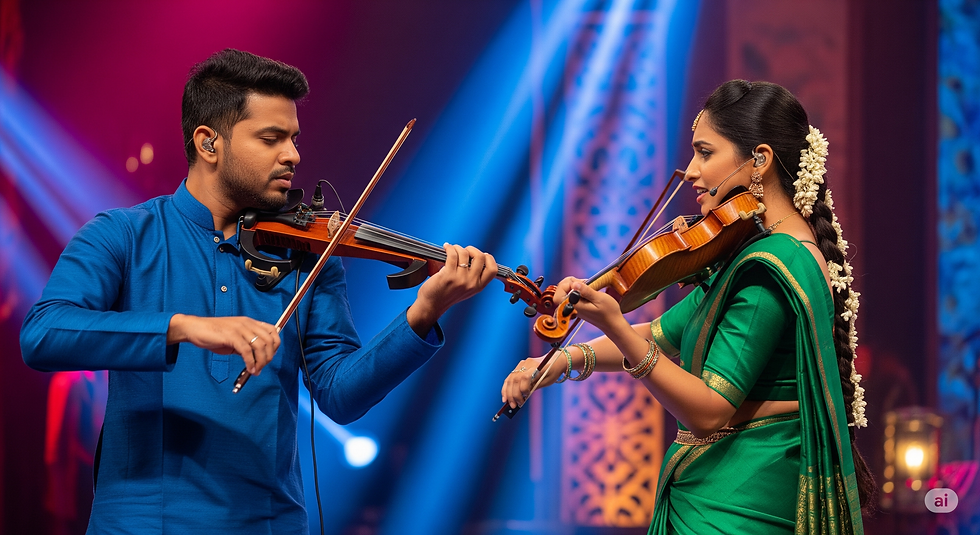"Mastering the Melodies: Essential Posture and Bow Grip for Violin Beginners"
- Sharanya naidu
- May 13, 2023
- 3 min read
Updated: Jul 30
Introduction:
Learning to play the violin is a beautiful and rewarding journey that requires patience, dedication, and a solid foundation. One crucial aspect of violin playing is maintaining the correct posture and grip. In this blog, we will delve into the essentials of holding the violin and gripping the bow, ensuring that you establish a strong and comfortable foundation for your musical endeavors.
Holding the Violin:
To begin, let's focus on the proper way to hold the violin. Follow these steps to achieve the correct posture:
a) Sit up straight: Maintain an upright posture with your back straight. This position will provide stability and prevent unnecessary strain on your body while playing.
b) Position your right leg: Extend your right leg slightly forward, creating a space near your ankle. This space will serve as a resting place for the scroll of the violin.
c) Resting the violin: Place the violin on your shoulder, ensuring that the upper part rests on your collarbone, approximately an inch above it. This is the ideal position to hold the violin while playing.
Initially, you may face some difficulties in maintaining the correct position, and there might be a risk of the violin slipping. To overcome this, lean slightly forward onto the violin, allowing for a comfortable posture. Remember, you should be able to move your hands freely while keeping the violin in place.
If balancing the violin proves challenging, try the following technique: Hold the violin with your left hand and adjust your posture accordingly. Make sure the violin comfortably fits into this position. You may need to bend forward slightly to achieve the right balance. Tailor the posture to your height and body proportions for optimal comfort.
2. Holding the Bow:
Mastering the proper bow grip is an essential skill in violin playing. Here's how to hold the bow correctly:
a) Right hand positioning: Take the bow in your right hand and place your thumb in the designated gap on the bow. The ring finger and middle finger should rest on the indicated dot on the bow. Your pinky finger should be positioned near the edge of the bow, and the index finger should rest lightly on top.
b) The conventional grip: This grip might require practice to avoid discomfort or pain in your right hand. However, it is the traditional and recommended way to hold the bow. The thumb, ring finger, and middle finger form the main support, while the pinky and index finger provide additional control.
c) Alternative grip: Some accomplished violinists and musicians prefer holding the bow slightly higher, about an inch above the indicated dot. This modified grip is also widely accepted and produces excellent results. Remember, there are no strict rules regarding bow grip position, and you should find a comfortable grip that suits you best.
Conclusion:
Developing proper posture and bow grip is crucial for any aspiring violinist. By following the techniques discussed in this blog, you can establish a solid foundation for your violin playing journey. Remember, practice is key to mastering these techniques, so be patient, persistent, and enjoy the process. With time and dedication, you will build a strong technical foundation, paving the way for beautiful music on the violin.



Comments